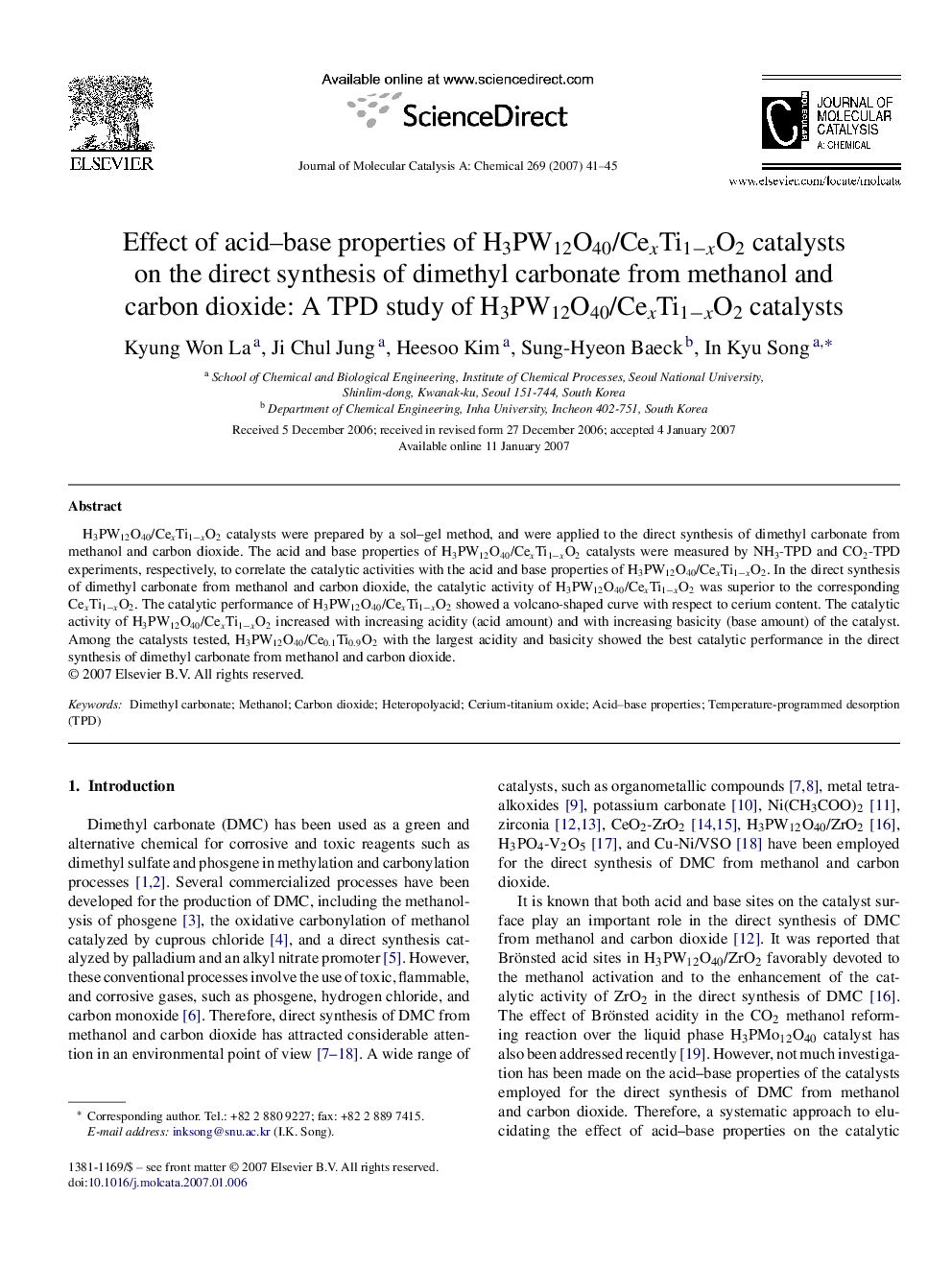| Article ID | Journal | Published Year | Pages | File Type |
|---|---|---|---|---|
| 67761 | Journal of Molecular Catalysis A: Chemical | 2007 | 5 Pages |
H3PW12O40/CexTi1−xO2 catalysts were prepared by a sol–gel method, and were applied to the direct synthesis of dimethyl carbonate from methanol and carbon dioxide. The acid and base properties of H3PW12O40/CexTi1−xO2 catalysts were measured by NH3-TPD and CO2-TPD experiments, respectively, to correlate the catalytic activities with the acid and base properties of H3PW12O40/CexTi1−xO2. In the direct synthesis of dimethyl carbonate from methanol and carbon dioxide, the catalytic activity of H3PW12O40/CexTi1−xO2 was superior to the corresponding CexTi1−xO2. The catalytic performance of H3PW12O40/CexTi1−xO2 showed a volcano-shaped curve with respect to cerium content. The catalytic activity of H3PW12O40/CexTi1−xO2 increased with increasing acidity (acid amount) and with increasing basicity (base amount) of the catalyst. Among the catalysts tested, H3PW12O40/Ce0.1Ti0.9O2 with the largest acidity and basicity showed the best catalytic performance in the direct synthesis of dimethyl carbonate from methanol and carbon dioxide.
Graphical abstractH3PW12O40/CexTi1−xO2 catalysts prepared by a sol–gel method were applied to the direct synthesis of dimethyl carbonate (DMC) from methanol and carbon dioxide. The catalytic activity of H3PW12O40/CexTi1−xO2 increased with increasing acidity and with increasing basicity of the catalyst.Figure optionsDownload full-size imageDownload as PowerPoint slide
